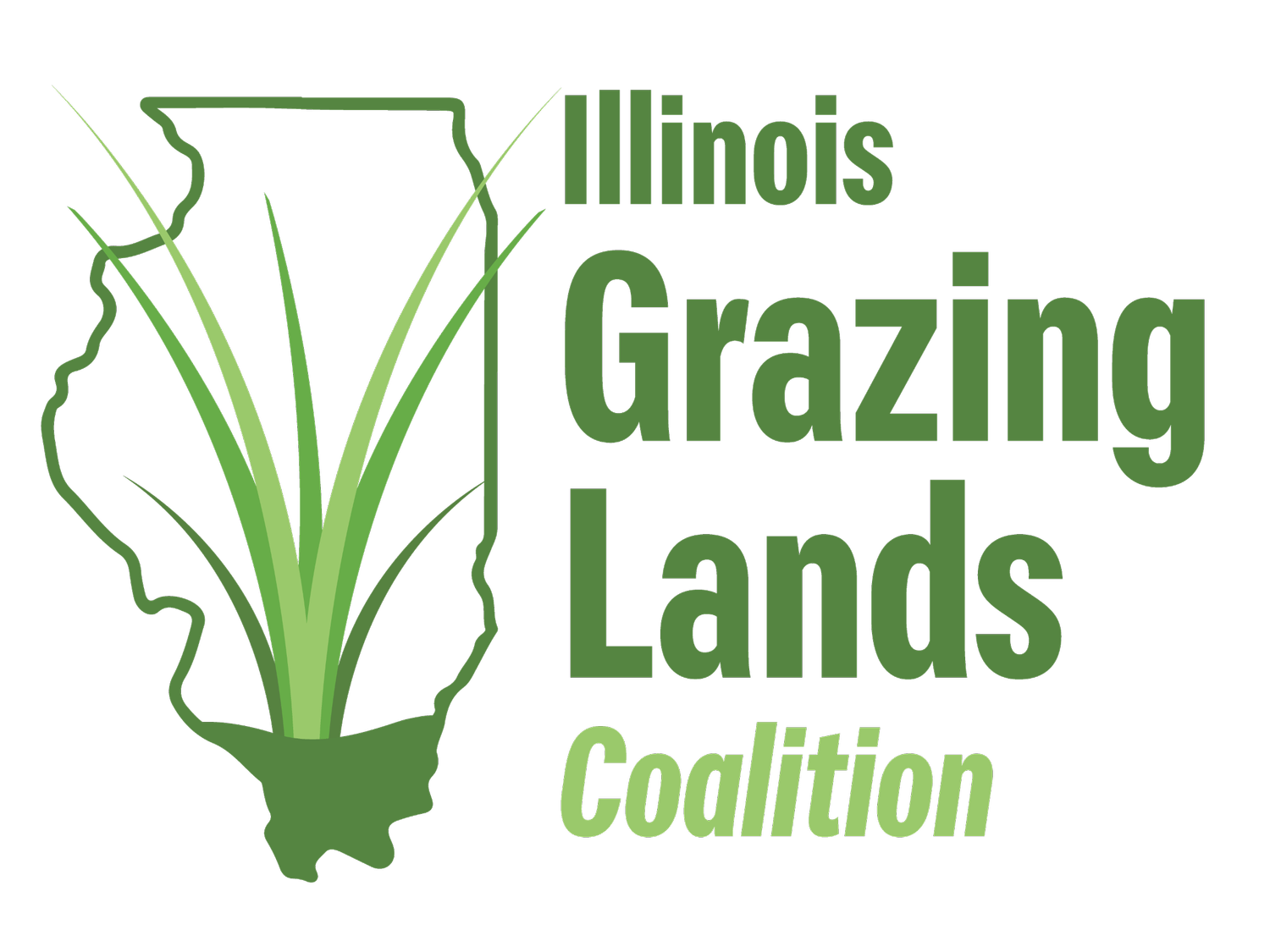Producer Spotlight: Dan Sanderson
Practical Lessons in Waterlines, Fencing, and Cover Crop Grazing
In November, Dan Sanderson of Pasture Grazed Regenerative Farm welcomed a group of Illinois producers to his farm for an insightful pasture walk, hosted by the Illinois Grazing Lands Coalition (ILGLC). Dan’s farm, located in northern Illinois, has practiced regenerative grazing since 2017 utilizing both permanent pasture and cropland on their 160 acres.
Waterline Infrastructure for Permanent Pasture
One of the highlights of the day was a close look at Dan’s waterline infrastructure, which simplifies daily cattle movements in permanent pastures. Dan uses 3/4-inch irrigation waterlines buried about 15 inches deep to create mobile water tank hookups throughout the pasture. Access to shade and water are a requirement of each daily grazing paddock, so having a mobile water sources makes it easier for Dan to set up paddocks and prevent back grazing and soil damage from heavy traffic areas.
Before winter, Dan uses an air compressor to blow out the lines, ensuring they don’t freeze. Livestock are moved to adjacent cropland during the winter months with access to a barn, so these waterlines are not in use at all during the cold months of Illinois winter.
Winter Grazing Practices
Dan also shared his strategies for winter grazing, including grazing cover crops after harvest and bale grazing. These practices not only extend the grazing season, but also offer soil health benefits on his cropland. Dan emphasized how having a winter grazing strategy is an important part of a regenerative system in northern Illinois, and that cost efficiency is a top priority. “We like to plant cover crops on most of our acres anyway, but rather than terminate them in the spring we try to make good use of them whenever possible as a valuable part of our grazing strategy,” said Dan.
Fencing Fundamentals
Throughout the pasture walk, Dan noted that having a good perimeter fence on all of your planned grazing land – whether it be permanent pasture or cropland – is a must. For those looking to improve or add fence, Dan demonstrated the tools and materials he relies on to build durable perimeter fencing. He uses 48-inch-high tinsel woven wire with a barbed wire strand on top for added security. Additionally, a hot wire is placed 12 inches inside the perimeter fence at approximately 36 inches high, allowing sheep to graze underneath, which keeps fence lines clear of trees and brush. For internal paddock divisions, Dan relies on flexible poly wire setups, which make rotational grazing for cattle practical and efficient.
Multispecies Grazing
Dan’s operation stands out for its use of multispecies grazing, with cattle and sheep sharing the pastures. This practice not only improves forage diversity but also aids in pest control and enhances overall pasture health. “Each species brings unique benefits to the land,” Dan explained, highlighting the synergies created by this approach. Adding one more species to the mix, Dan also runs a donkey with his sheep to deter coyotes.
Direct-to-Consumer Success
The visit concluded with a tour of Dan’s small farm store, where he sells meat directly to consumers. For Dan, direct sales are a critical component of his farm’s profitability since they don’t have to rely on volatile commodity prices to cover their input costs. He suggests selling bulk orders like quarter beef or half pigs to start, since this doesn’t require the additional overhead cost of processing or on-farm storage (customers pick up those orders and pay processors directly). The farm store offers an option for customers who want smaller quantities of meat, but Dan emphasized that this is entirely optional for farm-direct sales and accounts for a marginal part of his business.
This pasture walk hosted by ILGLC provided a wealth of practical knowledge and firsthand experience to other livestock producers in the region. Dan’s farm is a testament to how thoughtful infrastructure, creative grazing strategies, and direct-to-consumer marketing can create a thriving operation that benefits both the land and the community.
To learn more about Dan’s operation, visit www.pasture-grazed.com.


